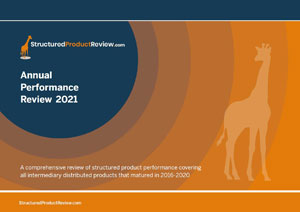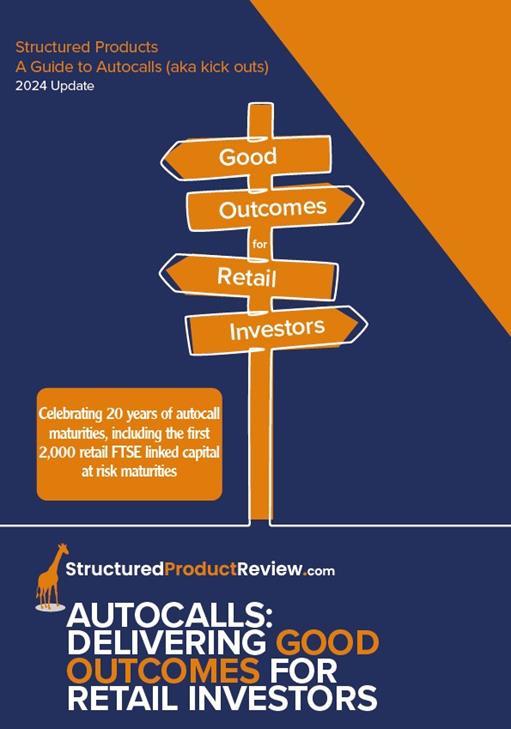Max Darer, Lowes Financial Management, 17/05/2023
Reverse Convertible Notes/ Fixed Income plans are a specific type of structured investment that generate unconditional income over a fixed term. Capital is still placed at risk, albeit with a degree of downside protection through the incorporation of a capital protection barrier. To compensate for the risk of loss, fixed income plans pay interest that is greater than conventional debt from the same issuer, maturity and seniority – potentially making them attractive for income seeking investors.
The main risks stemming from Fixed Income Plans are first of all counterparty risk, in the event that the issuer becomes insolvent or defaults, a catastrophic loss could result. Then there’s market risk, observed at the end of the term when falls in the underlying over the term could lead to losses in the event the market drops below the protection level.
Fourteen pure fixed income plans have been issued in 2023 (by strike date), paying either monthly or quarterly income over terms ranging 3-6 years, with the majority utilising 5-year terms.
The Bank of England Base Rate commenced 2022 at 0.25% and consistently rose to reach 4.5% in May 2023. With the last two interest rate hikes of 0.25%, we are still unsure of how much further we have to go, especially with stubbornly high inflation. The chart below shows the improvement in annual income terms seen as the Base Rate rose throughout 2022 and so far in 2023, together with the coupons offered by fixed income plans.
(Source: StructuredProductReview.com)
Whilst we can see that capital at risk fixed income terms have clearly improved since the start of 2022, with one three stock linked plan paying just shy of 9% per year in exchange for increased risk of capital loss at the end of term. In 2023 the trend of improvement has not persisted, with the majority of capital at risk fixed income plans now offering close to the 6% annual income mark.
Given the magnitude and speed of rate hikes, deposit-based autocall and income plans have emerged in competition with the capital at risk fixed income plans. So far in 2023 deposit autocalls has offered an average coupon of 6.4% for each year held, whereas the average income from capital at risk fixed income plans has been 5.9% per annum. Obviously, the income payments are unconditional whereas the autocall deposit returns are contingent on the performance of the underlying but this needs to be considered against the backdrop of the deposits not putting capital at risk from market movements or bank default up to Financial Services Compensation Service (FSCS) limits (currently £85,000 per claimant). Deposit-based fixed income plans have offered an average of 4.5% income per annum crudely demonstrating average risk premium of 1.4% per annum – a 31% uplift in return for putting capital at risk.
The effect of rising interest rates has had a clear impact on annual returns offered by income paying structured products. Given the significantly lower level of risk than a capital at risk plan thanks in part to FSCS protection in the event of counterparty failure, deposit-based plans have solidified themselves a place in the market, once again.
Structured investments put capital at risk.
Past performance is not a guide to future results.
Also in this section
- How old is too old? Are structured products to die for?
- Product focus - October 2024
- Q3 2024 Issuance
- Q3 2024 maturity results
- A share of spread bets on steroids?
- Product focus - September 2024
- Maturities of the month - August 2024
- Right on time
- Product focus - August 2024
- Keep calm and zoom out
- 2,000 and counting
- Q2 2024 maturity results
- 20 years of autocall maturities
- Product focus - June 2024
- Fixed income or interest?
- Maturities of the month - May 2024
- The barrier debate - revisited
- Product focus - April 2024
- Maturities of the month - April 2024
- Time to call
- I don't believe markets are ever too high for Structured products!
- Notes on counterparty exposure
- Return of Nikkei
- Q1 2024 issuance
- Q1 2024 maturity results
- Structured Products – AAAAAGH!
- Hop in CIBC
- Re-enter Santander
- How to build a financial fortune - revisited
- Issuance in 2023
- Where's the risk?
- Questionable offerings
- Challenging the case against structured products - 'Loss of dividends'
- Navigating the investment landscape
- Challenging the case against structured products - Counterparty risk
- 6-year autocalls approaching final destination
- 1,750 FTSE capital at risk autocall maturities
- The leopard that changed her spots
- Q3 2023
- Challenging the case against structured products - Keydata
- Dilemmas for UK IFA's and the unique role of Structured Products
- 'High charges'
- Precipice bonds
- Intro
- FTSE 100 Contingent Income
- Indexing the indices
- Something different
- Investing through volatility
- 100 10:10s
- The best or worst?
- The 10%/25% 'Rule' that never was
- Structured products and the yield curve
- Fixed income: Capital at risk?
- Prospects for UK inflation - and fun with A.I!
- The Barrier Debate
- More Deposits for now
- Last of the Americans
- What if?
- Time heals all wounds, we hope...
- How to diversify portfolios using structured products?
- The Proof Is In The Pudding...
- Debunking Structured Misconceptions
- 1,500 FTSE Capital-at-Risk Autocall Maturities
- Q3 2022 Maturity Results
- What do we prefer?
- Deposits vs Capital ‘Protected’
- There’s time yet…
- Where did you invest your clients?
- A Six-Month Reflection
- Return of the Rev Con
- Happy 2nd Birthday FTSE CSDI
- Q2 2022 Maturity Results
- The best and worst yet still the best
- Critique my Suitability - Mariana 10:10 Plan June 2022 (Option 2)
- 10/10 for 55 10:10’s
- Q1 2022 Maturity Results
- 'How to build a financial fortune': a follow up
- Critique my Suitability - Mariana 10:10 Plan April 2022 (Option 2)
- 2021 Capital-at-Risk Autocall Maturity Review
- An unwelcome return...
- CSDI's First Birthday
- Bon Anniversaire
- Introducing the FTSE Custom 100 Synthetic 3.5% Fixed Dividend Index
- Q3 2021 Maturity Results
- Critique my Suitability - Mariana 10:10 Plan October 2021 (Option 2)
- Blurring the lines...
- Beware of false knowledge; it is more dangerous than ignorance
- Good news, bad news...
- Certainty is Certainly a Benefit
- Critique my Suitability - Mariana 10:10 Plan September 2021 (Option 2)
- A Twenty-Year Progression
- Q2 2021 Maturity Results
- Nine 8:8s Post Positive Returns in Falling Markets
- Critique my Suitability
- Q1 2021 Maturity Results
- Morgan Stanley’s Marvelous Maturity Medley
Current Products
We review the UK's retail structured investment sector, providing pertinent support for Professional Advisers and relevant research tools.
View all ⟶


